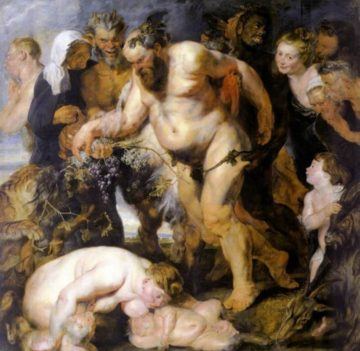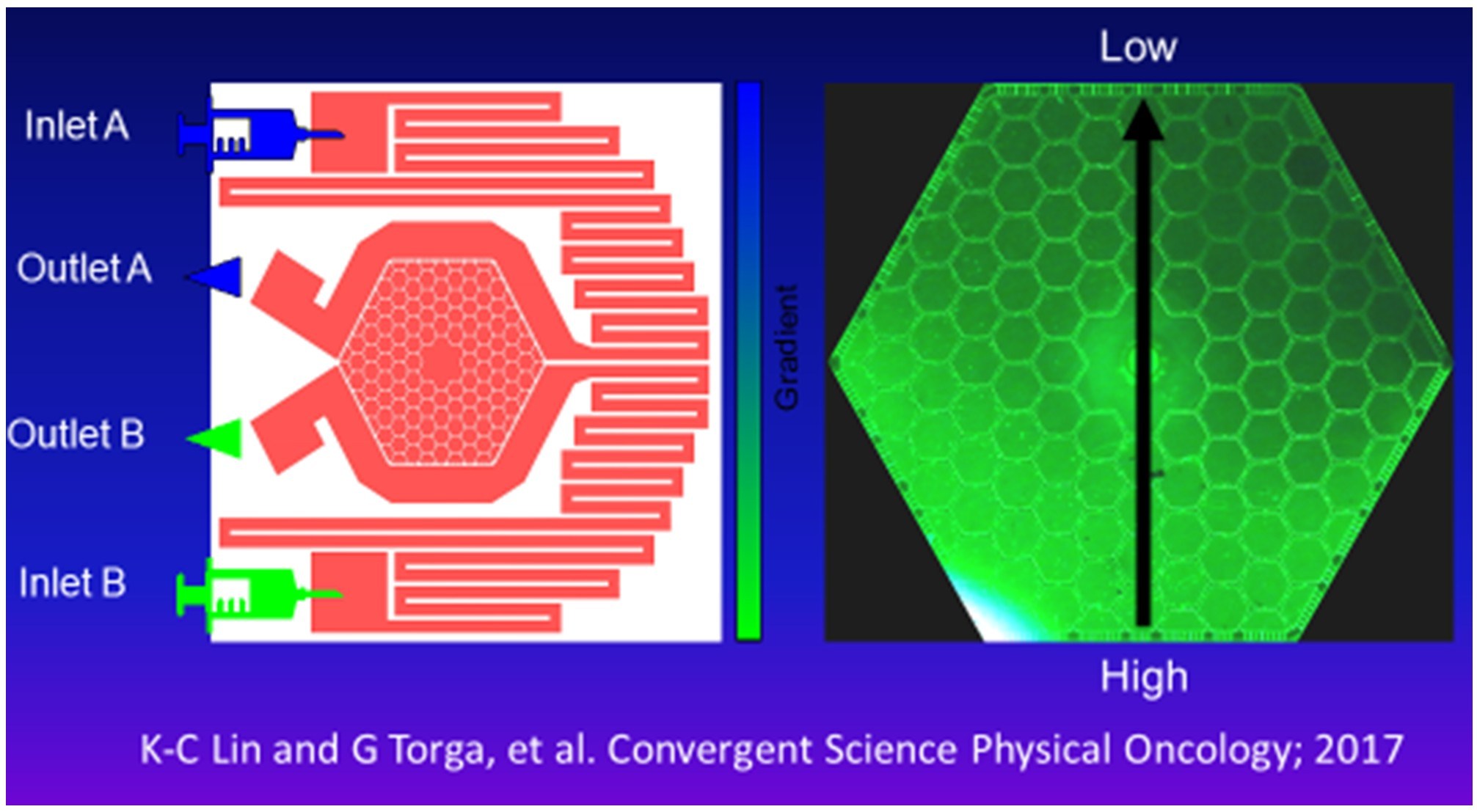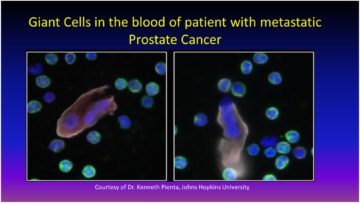by Azra Raza
All of the articles in this series can be found here.
Do I contradict myself?
Very well then I contradict myself,
(I am large, I contain multitudes.)
—Walt Whitman
 When King Midas asked Silenus what the best thing for man is, Silenus replied, “It is better not to have been born at all. The next best thing for man would be to die quickly.”
When King Midas asked Silenus what the best thing for man is, Silenus replied, “It is better not to have been born at all. The next best thing for man would be to die quickly.”
Herein lies the essential contradiction; we begin to die from the moment of birth. Walt Whitman not only embraces this existential incongruity, he asserts that being contradictory is a positive, desirable virtue: “Do I contradict myself? / Very well then I contradict myself, / (I am large, I contain multitudes).” If you don’t contradict yourself, you are leading a simple, unexamined inner life. His large persona contains opposing, conflicting, paradoxical “multitudes” providing opportunities for self-discovery, and for change. Change is a good thing. Whitman’s friend Emerson summed it up: “A foolish consistency is the hobgoblin of little minds.”
Enter cancer. The only known lifeform that defies mortality, surpassing the life-death contradiction by achieving man’s ultimate dream of living forever. But at what cost? The immortalized cells burn and blast their way through membranes and organs, scorching tissues, fracturing bones, leaving behind a bloodbath of death and destruction, creeping and crawling into local sanctuaries, swimming in blood vessels, riding in lymphatics, invading new sites, deforming, butchering, exterminating, annihilating, until, in a final act of genocidal-suicidal-homicidal carnage, consuming the mortal host and the immortal unwanted guest alike, a wasted body ends upon a funeral pyre with kilograms of tumor.
Cancer can be perceived as an independent life-form. It is not a parasite because it originates in the host tissue. It is not a “normal” tissue culture cell line that has been induced to grow in vitro, already half-way to transformation. And it is not like jellyfish and other lower order species that can revert to an earlier stage of their lifecycle under stress and restart as newborns. It behaves like a new animal that arises within an animal.
What canonical existential pathways, what secrets of embryology, what codes of life does The First Cell coopt in order to take off as a new species within a species? A species that cannot interbreed with its host anymore, yet, its raison d’etre is to breed. To make copies of itself. Copies that make more copies that make more copies ad infinitum. There are minor variations in each new copy simply because of random DNA copying errors, variations that can be imagined as 6 billion humans whose faces don’t exactly resemble each other. No other life-form on the planet has conquered death in such a bizarre manner. Unlocking The First Cell’s secret of normal-to-cancerous transformation may hold the key to unlocking the secret of immortality for man.
Before, way before my overpowering emotional commitment to patients, there was this intellectual challenge of cellular transformation and immortalization that seduced me into oncology. The question I obsess over concerns events surrounding the birth of The First Cell. If it is a new lifeform, it must involve a “fertilization” phase followed by some form of abbreviated, abortive embryonic journey. Carcinogenesis recapitulating ontogenesis.
I propose that the fertilization step involves the fusion of a blood cell with a stressed tissue cell that initiates the murderous journey. A Giant cell is born containing opposing, conflicting, paradoxical “multitudes” within it. The First Cancer Cell origin story has curious parallels with The First Eukaryotic Cell origin story, the one described by Lynn Margulis, showing that it was the fusion of two unicellular creatures that led to all the multicellular plant and animal lifeforms we see today.
Kenneth J. Pienta summarizes the above in precise scientific language: “These insights from the cancer field, which observes tissue evolution in real time and closer than any other field, allow inferences to be made on evolutionary events in animal history. If a sweet spot of phenotypic and reproductive versatility is key to transformation, factors stimulating cell fate separation may have promoted also animal diversification on Earth.” https://mcr.aacrjournals.org/content/18/6/801
Defying tradition, following instinct
 Ken, oncologist and prostate cancer researcher, is exceptional in more ways than one. The son of parents who met in a concentration camp, witnessing human suffering at its worst, Ken grew up hearing his parents repeat the same message over and over, “We have to be better than that.” We must use all our intellectual resources to improve the human condition. Medicine became Ken’s way of service, his parents’ anguish empowering him in unexpected ways, allowing him to defy tradition, follow his own instincts, tread roads less traveled by.
Ken, oncologist and prostate cancer researcher, is exceptional in more ways than one. The son of parents who met in a concentration camp, witnessing human suffering at its worst, Ken grew up hearing his parents repeat the same message over and over, “We have to be better than that.” We must use all our intellectual resources to improve the human condition. Medicine became Ken’s way of service, his parents’ anguish empowering him in unexpected ways, allowing him to defy tradition, follow his own instincts, tread roads less traveled by.
“Back when I was first trying to understand why prostate cancer spreads to the bones in the 1990s, we had no tissue available for study. Bone was hard to get tissue from. So, I asked my terminally ill patients to donate their bodies to understand these questions. They were going to die. No one said no.”
“We also recognized that we had to get the cancerous tissue before the body got cold. We needed to perform “warm autopsies”. As soon as the patient died, the nurse would call us. We had to get the body out the door to the autopsy suite and finish under an hour. We realized we were depriving families from sitting Shiva, so we would do a moment of silence and then harvest every piece of cancer we could find. We had to cut through the bones carrying metastases and extract pounds of cancer. It was such a reverential experience. People were giving this gift of their bodies and you felt their presence in the room.”
“Then we did something that was absolutely necessary. The tissue was viable and could be studied for DNA, RNA and protein, so we started giving it to anyone who wanted to study prostate cancer. Most of the molecular discoveries in 2000s can be traced back to these autopsies. It is the most important thing I have ever done or ever will do in my life. It profoundly affected how I think about cancer. It turned me into a cancer ecologist. Cancer goes beyond simple mutations.”
Ken has sobering words for the field, “To begin with, all of us need to seriously absorb the fact that metastatic cancer remains incurable, claiming 10 million lives annually. Despite everything we are doing, except for a few very specific examples where immunotherapy is applicable or where a small subset of cancers can be cured with chemotherapy, we are not winning. We are not winning by any stretch of conventional thinking.”
Over three decades of a distinguished research career, Ken has learnt a few things. “We tend to think of cancer as an apex predator, impossible to defeat. But apex predators are always few in number as they occupy a niche at the top of the food chain. Thinking of cancer as an invasive species with billions of members overwhelming their environment introduces a new concept of how cancers grow and spread”.
What do cancer patients die of?
Around Autopsy Number Twenty, Ken asked himself an obvious question that every oncologist should be able to answer, but many don’t give much thought to. What do cancer patients die of? “They don’t die of cancer in the sense that malignant cells are causing a mechanical destruction,” Ken said. “A kilogram of tumor contains about 1-2 trillion cells – which is incompatible with life. A kilogram of tumor kills not by its physical presence, but by producing ‘swamp gas’. The poisons produced by the cancer swamp is so toxic that 40% patients die from severe wasting, 40% die of a clotting or thrombo-embolic event, while 20% die of a variety of other causes like not eating, pain, infections.” Practically all die of metastatic, treatment resistant disease. “Not cancer, but the cancer swamp is killing the patient,” said Ken.
Once cancer relapses, it is more virulent. Metastatic cancer is resistant to every therapy. Normal cells aren’t. “Everyone thought that sequencing for driver mutations would explain metastasis and drug resistance. It failed. You cannot find where resistance comes from by sequencing DNA. All tumors are resistant.” We need to understand the cancer swamp.
An ecosystem paradigm
 Ken uses the example of green, healthy grasshoppers transmogrifying under stressful nutritional challenges into gregarious, swarm-forming yellow locust in the next generation, and back again to green creatures in the next if conditions improve.
Ken uses the example of green, healthy grasshoppers transmogrifying under stressful nutritional challenges into gregarious, swarm-forming yellow locust in the next generation, and back again to green creatures in the next if conditions improve.
Cancer cells seem to be following this ecosystem paradigm. Faced with stress caused by chemotherapy for example, cancer cells become motile and move out to seek newer homes. To observe this transition from stationary to mobile, Ken and his many smart colleagues across departments, disciplines and universities, created a cancer ecosystem on a chip. Now they could study the behavior of cancer cells in real time and in their natural habitat, the cancer swamp.
In a hundred years, they could not have imagined what they saw. Giant cells with large or many nuclei seemed to appear out of nowhere once the majority of small cancer cells died. The greater the stress, the higher their number. Then they birthed smaller cells and the progeny had a survival advantage. Ken and his team caught on camera how a rare type of giant cell with high DNA content can be found hiding among smaller cancer cells in practically every type of cancer. They named them Poly-Aneuploid Cancer Cells or PACCS. I will continue to refer to them as Giant cells since other researchers (to appear in subsequent columns) use different names. A universal nomenclature has yet to be accepted.
Basically, Giant cells appear when treatment kills the majority of cells in a tumor. Once the effects of chemotherapy fade, Giant cells release smaller, more resistant, more aggressively growing and invasive cancer cells that cause relapse. ‘We sat on this [finding], we just didn’t believe it – if it is this fundamentally important, how did we [the scientific community] miss this, all these years?’
Giant Cells are central to tumorigenesis, metastasis and therapeutic resistance
To understand the conditions where Giant cells appear in greater numbers, Ken and his team engineered The Evolution Accelerator cell culturing platform. Cancer cells are injected into little hexagonal micro-habitats and their movement can be tracked for weeks as they are exposed to varying concentrations of chemotherapies.
“Because we had the actual time lapse movie and saw the dynamic changes, we could document their activity and function. We hypothesize that these giant cancer cells are central to tumorigenesis, metastasis and therapeutic resistance. Resistance was not due to tumor cell heterogeneity but is mediated by these giant cells. They are the important cells.”
Universal phenomenon
 It was not just the one type of prostate cancer cells manifesting this bizarre behavior. Every cancerous tissue culture cell line tested followed the same pattern. Any stress, whether caused by chemotherapy, radiation or hormone therapy, induced the formation of Giant cells. “Is this happening only in tissue culture? We asked pathologists if they see giant cells in cancer tissues and they said no. One problem is the way the cells are stained on pathology slides. Two nuclei could appear like two adjacent cells instead of one giant cell. With the right stains, where you see cell boundaries, you can find giant cells in all types of cancers. Giant Reed-Sternberg cells are well described in Hodgkin’s Disease. Abnormal looking giant cancer cells have now been documented in multiple cancers, including breast, colon, glioblastoma, bladder and lung cancer, always seen as a few cells in a sea of the regular size cancer cells that make up a tumor. Similarly, by changing automated counting algorithms that identify circulating tumor cells, we can now find these cells in the blood of cancer patients.”
It was not just the one type of prostate cancer cells manifesting this bizarre behavior. Every cancerous tissue culture cell line tested followed the same pattern. Any stress, whether caused by chemotherapy, radiation or hormone therapy, induced the formation of Giant cells. “Is this happening only in tissue culture? We asked pathologists if they see giant cells in cancer tissues and they said no. One problem is the way the cells are stained on pathology slides. Two nuclei could appear like two adjacent cells instead of one giant cell. With the right stains, where you see cell boundaries, you can find giant cells in all types of cancers. Giant Reed-Sternberg cells are well described in Hodgkin’s Disease. Abnormal looking giant cancer cells have now been documented in multiple cancers, including breast, colon, glioblastoma, bladder and lung cancer, always seen as a few cells in a sea of the regular size cancer cells that make up a tumor. Similarly, by changing automated counting algorithms that identify circulating tumor cells, we can now find these cells in the blood of cancer patients.”
How are giant cells formed?
In two ways. “We have observed that they can double their DNA and cell contents without dividing. We have also observed cells fusing together in our microfluidics device. Imagine, cancer cells fuse together to become stronger! Giant cells are not a separate species of cancer cells but represent a specific state of cancer cells. Ken and his colleagues think this state results from what they call polyaneuploid transition or PAT. First, a few tumor cells respond to stress by accessing alternate cell programs that allow fusion or doubling of their aneuploid genome. Second, as part of cell enlargement and the polyploid program, a cancer cell in the Giant cell state pauses cell division which allows it to adapt to toxic environments while protecting its DNA. This state also provides increased cell resiliency and survival in foreign sites, enabling successful metastatic seeding. Third, when the stressor is removed, the Giant cell can undergo depolyploidization and reinitiate cancer cell proliferation, generating resistant progeny that make up the bulk of cancer cells within a tumor.”
The Big Question: How do we target them?
Giant cells appear under normal stressful conditions without turning malignant. Their function is to protect cells in times of crisis. Should we be killing them? Definitely yes when they appear after treatment since they seem to be associated with relapsing, refractory, resistant disease, causing metastatic spread of cancer. What about in The First Cell stage? Here, I am ambivalent. Giant cells at cancer initiation are appearing as a response to some stress. Is it not better to address the stress rather than the response to stress? What it comes down to is resources. Studies around cancer initiation need to be financially incentivized.
A dark force from within
I learnt about the Midas story and the background of Peter Paul Reuben’s grand painting, The Drunken Silenus, from the equally grand book with the same title by our dear friend Morgan Meis. I turn to Morgan for the last words:
“A final thought. When The Sea Peoples came to destroy the civilization, when they came to destroy the civilization of the Eastern Mediterranean at the end of the Heroic Age, setting off the Dark Age of the late thirteenth century BCE, when The Sea Peoples brought down the Hittites and the Mycenaeans and reduced civilization back to its bone, they may have been acting from within. The Sea Peoples may simply be the name that a few terrified scribes gave to elements of their own civilizations that had broken off in the chaos of decline and turned against themselves. Maybe, sometimes, civilization wants to go under. It generates its own destructive forces to accomplish that, forces from within that come forth to carry it all under. The record goes black. A moment of total silence when even Silenus can rest.”
Everything Morgan says about human civilization applies to cellular civilization. Alas, we are about as close to understanding cancer as we are to understanding The Sea Peoples.
***
The Drunken Silenus by Morgan Meis, Slant (April 9, 2020)
Ken’s portrait: https://cmm.jhmi.edu/index.php/cmm-faculty/318/
Micro-chip: https://iopscience.iop.org/article/10.1088/2057-1739/aa83bf/pdf
Prostate Cancer cells in blood: Courtesy of Kenneth Pienta
Some quotations attributed to Ken: https://www.scientia.global/dr-kenneth-j-pienta-are-poly-aneuploid-cancer-cells-the-keystone-cure-for-cancer/
